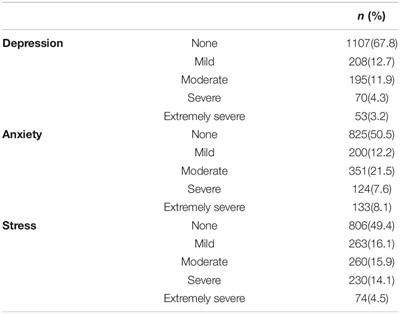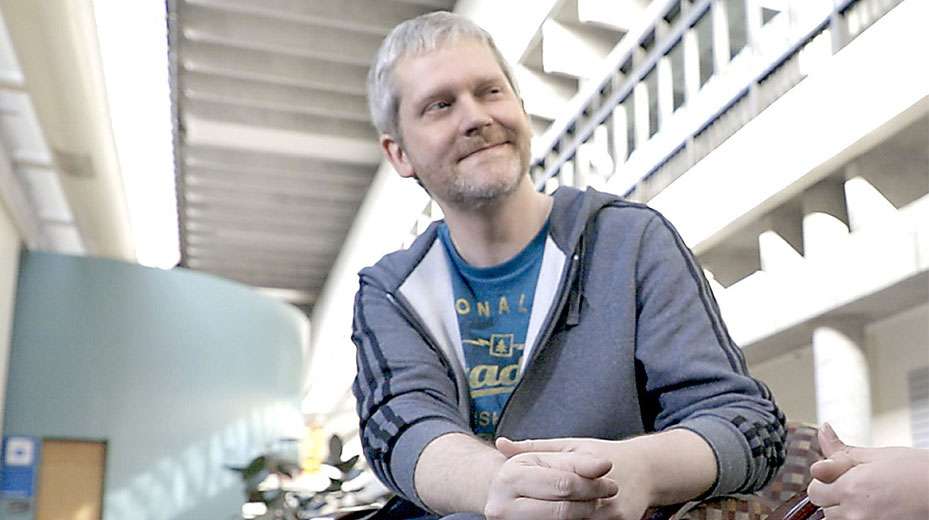Mental health symptoms associated with the novel coronavirus pandemic could last months or years longer than the pandemic itself. Specifically, many individuals and families may seek out therapy to help with post-traumatic stress disorder (PTSD).
Symptoms of PTSD include nightmares, severe anxiety, flashbacks, or uncontrolled thoughts about a traumatic incident. If the symptoms get worse, affect daily life, or persist for months or years, it could indicate PTSD.
Who may need trauma therapy?
Trauma therapy may be helpful for individuals who have experienced a variety of situations associated with COVID-19:
Recovering from severe cases of COVID-19
Losing loved ones to the disease
Working directly with patients diagnosed with COVID-19
Disruptions due to school closures
Social isolation associated with stay-at-home orders, including experiences of domestic abuse
Job loss and other financial difficulties
Loss of or limitations to support services for mental health or substance use disorders
Increased consumption of negative news stories and social media, which can increase anxiety and fear
What can help individuals who have experienced trauma?
Here’s an overview of different types of evidence-based therapies often used for individuals who have experienced trauma.
1. Cognitive Behavioral Therapy (CBT)
A type of talk therapy, CBT examines a client’s thought patterns and how they influence behavior and choices. CBT helps clients pinpoint how some of their thoughts and behaviors have been incorrect or unhelpful.
Over time, clients can use CBT to develop more helpful, accurate thinking patterns and coping behaviors that can reduce symptoms and improve quality of life. For more details, check out our previous CBT post on the BestNotes blog.
2. Exposure Therapy
Exposure therapy can help clients confront and overcome their fears. Exposure therapy helps clients break patterns of avoidance by creating a safe environment in which he or she can face what they fear.
The BestNotes blog has a detailed post that provides a closer look at exposure therapy.
3. Narrative Exposure Therapy (NET)
A person’s life experiences and wellbeing heavily depend on the “story” that each individual tells himself or herself. With NET, a client can develop a fuller, more positive life story that appropriately contextualizes the traumatic event and how it has influenced him or her.
NET may help clients who have experienced complex and multiple trauma. One common use is among refugees, who have experienced trauma from “political, cultural or social forces.”
4. Eye Movement Desensitization and Reprocessing (EMDR) Therapy
EMDR is an evidence-based treatment for PTSD that helps clients process their trauma to aid healing. During EMDR sessions, the client focuses on a back-and-forth movement or sound while remembering an upsetting memory. The clinician also helps the client talk about and process their traumatic memories until PTSD symptoms decline.
5. Psychodynamic Trauma Therapy
Psychodynamic trauma therapy focuses on different factors that may affect or cause a client’s PTSD symptoms, such as experiences and coping mechanisms. This type of therapy focuses mostly on the client’s unconscious mind and how it influences behavior. Here, the therapist helps a client recognize and process painful, unconscious feelings so they can be released instead of being avoided.
Behavioral health clinicians may see a rise in demand for trauma-related therapies in the wake of COVID-19. Make sure you’re taking care of yourself as much as your clients with a customized EHR solution that helps you save time and reduce frustration. Contact BestNotes today to learn more.
Roughly 70% of adults will experience some type of traumatic experience at least once in their lives. 33% of children and youth will be exposed to violence within their community that will cause them to experience PTSD (Post Traumatic Stress Disorder). For years, doctors have looked for better, more effective ways of dealing with trauma. Since people experience and process traumatic events differently, it can be hard to point out a therapy method that is most effective. Counseling centers and therapists utilize a number of different types of trauma therapy to help people through their most vulnerable times.
Types of Trauma Therapy
Doctors use a variety of different trauma therapy treatment options to help people deal with trauma and PTSD. Some have been used for decades while others have only been used in recent years. These therapies may not be for everyone. However, they have proven to be effective in most patients when dealing with traumatic events.
Psychotherapy
Also referred to as talk therapy, psychotherapy gives the patient an opportunity to speak about their trauma and work through the healing process. Doctors help their patients talk through the problems they are experiencing on a regular basis. The patient and doctor form a bond of trust in order for them to open up and share.
Cognitive-Behavioral Therapy
Cognitive-behavioral therapy is a form of behavior therapy. Doctors help their patients identify behaviors and attitudes that reflect negatively on their lives. Patients then work to replace these negative attitudes with positive ones. Patients will often utilize these new skills in their daily lives.
Cognitive Processing Therapy
Similar to CBT, cognitive processing therapy helps teach patients new, more positive ways of addressing trauma-related beliefs and emotions.
Dialectical Behavior Therapy
Like other types of trauma therapy, dialectical behavior therapy aims to better regulate emotions. This form of therapy has been effective in helping those who experience suicidal thoughts. This method has been effective for a number of mental health disorders including PTSD. It helps instill new skills to help people change unhealthy behaviors.
Eye Movement Desensitization and Reprocessing (EMDR)
Eye Movement Desensitization and Reprocessing (EMDR) therapy has patients focus on their trauma while being visually stimulated. Thoughts, feelings, and physical sensations are activated while the stimulation helps reduce the emotion and physiological reaction to the trauma. Negative thoughts associated with the trauma can then be reprocessed with more positive and accepting beliefs.
Group Therapy
Group therapy is beneficial because it shows that patients are not alone in their struggles. By being in a supportive and safe environment, group members become more comfortable sharing their stories and helping others through the trauma.
Brainspotting
Brainspotting therapy identifies trauma, negative emotions, and pain, including physical pain. Therapists guide the patient’s eyes with a pointer. The direction in which people look can affect the way they feel. Brainspotting helps doctors identify triggers for a traumatic memory or negative emotion.
Get the Trauma Help You Need Today
Most people will experience a traumatic event at some point in their lives. While many people will seek out help to process their trauma, many people will not. There is nothing wrong reaching out for help. At the Trauma Counseling Center of Los Angeles, we offer a number of programs to help you or your loved one address traumatic memories and live a happier and better life. We offer various types of trauma therapy to help you come to terms and focus on a better tomorrow. Some of these therapies include:
If you are ready to make a change and get help, we are here to help. Call 310.720.8200 today to speak to a mental health professional about treatment options.
Trauma can affect all areas of your life — but healing is possible. Therapies optimized for trauma can be especially helpful.
Traumatic experiences can leave a deep imprint on the body and mind. The impact may show up immediately or years later, affecting your mood, relationships, and even your sense of self. But there are effective treatments to help you heal from trauma.
Around 70% of adults in the United States have experienced at least one trauma in their lives. Not everyone will have lasting effects, but 6% of U.S. adults develop post-traumatic stress disorder (PTSD).
Trauma can change your brain and nervous system, leading to dysregulation and symptoms such as depression and anxiety. As such, trauma therapies focus on soothing the nervous system, integrating traumatic memories, and supporting both mind and body healing.
There’s no one-size-fits-all when it comes to trauma treatment — the “best” type is the one that works for you. Finding the right therapy can take some time, but support is available along the way.
How can therapy help with trauma?
Trauma can come after a one-off event, such as an accident or assault, or from repeated events, like an abusive relationship or childhood neglect. Complex trauma — the kind that arises from repeated events — often stems from childhood experiences that affect your adult life.
Therapy can help you integrate traumatic event(s) and understand them — which helps you begin the healing process. Your memories of the trauma will stay, but they’ll start to have less power over you and your emotions.
“Therapy is helpful in normalizing an individual’s responses to the trauma they experienced,” explains Lisa Curtis, a licensed clinical social worker in New York. “[It] can provide them with new skills to manage their feelings and responses while also providing a context and education around the event itself.”
There are many evidence-based practices (EBPs) for trauma and PTSD, which are interventions that have proven robust in working with targeted populations, though not all recommended therapies are EBPs.
Types of therapy for PTSD and trauma include:
Cognitive processing therapy
Cognitive processing therapy (CPT) was developed by Patricia Resick, PhD, ABPP, as a treatment for PTSD. It aims to help people who feel “stuck” by their thoughts about the trauma.
In CPT, your therapist will help you learn to challenge and change unhelpful beliefs about the trauma that are keeping you “stuck.” The aim is to help you understand and think differently about the event(s), thereby relieving the negative effects.
A 2018 review concluded that, based on existing evidence, CPT is “an effective PTSD treatment with lasting benefits across a range of outcomes.”
According to the American Psychological Association (APA), this therapy is strongly recommended for PTSD.
Prolonged exposure therapy
Prolonged exposure (PE) is a behavioral treatment for PTSD that, as the name suggests, involves confronting the source of your fear to reduce anxiety around it.
Avoidance is a prominent symptom of post-traumatic stress. PE therapy aims to help you overcome avoidance that developed after your trauma.
During therapy, you’ll learn to control your breathing, talk about your trauma, and gently confront your fear in the real world. For example, someone who lived through sexual assault might go back to the location where it occurred to help them realize that the trauma is no longer happening and that they are now safe.
“The more we avoid the feelings, thoughts, sensations, memories, and images that are connected to our trauma, the worse the symptoms of trauma become,” explains Avigail Lev, PsyD, a licensed clinical behavioral therapist, author, and director of the Bay Area CBT Center in California.
“So the most important part of treating trauma is exposing individuals to the feelings, thoughts, sensations, memories, places, and images connected to their trauma [because] this aids in the process of desensitization.”
According to the APA, PE therapy is strongly recommended for PTSD.
Trauma-focused CBT
Trauma-focused CBT (TF-CBT) therapy is a cognitive behavioral treatment mainly used for kids and teens with trauma.
TF-CBT’s goal is to help children recognize false beliefs (such as who to blame for abuse), correct unhealthy behavior patterns, and develop new ways to cope, such as self-soothing and expressing their emotions. Parents or caregivers are also involved in this approach.
A 2014 review concluded that TF-CBT could effectively reduce symptoms of PTSD in some children, and the APA strongly recommends forms of CBT for treating PTSD.
EMDR therapy
Eye Movement Desensitization and Reprocessing (EMDR) is a trauma therapy developed by psychologist Dr. Francine Shapiro in 1987. The therapy is unusual in that it doesn’t involve much talking — it aims to help you process and release traumatic memories through eye movements.
In an EMDR session, your therapist will ask you to hold a specific aspect of a traumatic event in mind while you focus on their hand moving back and forth (or, sometimes, rhythmic tapping).
The aim is to help your brain “reprocess” the memory — which wasn’t fully processed at the time due to overwhelming stress — by engaging both sides of your brain (known as bilateral stimulation).
This reprocessing aims to release the memories, ultimately relieving nightmares, flashbacks, and triggers.
For some people, EMDR may yield results faster than other forms of therapy, such as talk therapy.
A 2014 study by Shapiro found that 80% to 90% of people saw results within the first 3 sessions, while a 2017 review found it to be just as effective as cognitive behavioral therapy (CBT).
Note that EMDR appears to work best for single-event trauma, and it may not be as effective for complex trauma or complex PTSD.
According to the APA, EMDR therapy is a conditionally recommended treatment for PTSD.
Somatic therapies
Traumatic memories are held in the body as well as the mind. Somatic therapy focuses on how your emotions can physically impact the body. These emotions can resurface suddenly if you encounter a trigger or something that reminds you of a trauma.
Somatic therapy aims to “release” pent-up trauma to relieve mental health symptoms and chronic pain, using methods such as developing body awareness and grounding in your body.
A 2017 study found that somatic experiencing — talking through past traumas while exploring the body’s physical responses and sensations — was an effective treatment for PTSD.
Psychodynamic therapy
In psychodynamic therapy, your therapist will help you understand how your past has affected your current emotions, behaviors, and relationship patterns.
The aim is to help you understand the unconscious motives that drive your behavior.
Your therapist may help you understand how early childhood experiences, family dynamics, and current relationships — which may be shaped by trauma — affect your current coping methods and beliefs about the world.
According to a 2008 review, psychodynamic approaches in trauma therapy can lead to:
- improved self-esteem
- using more helpful coping methods, and fewer unhelpful coping methods
- improved relationships
- better social functioning
The authors note that psychodynamic approaches may be especially helpful in treating complex PTSD.
Other therapeutic techniques for trauma
While the therapy techniques above have received the most research attention, trauma therapists may also draw on other therapeutic methods.
Additional therapies and techniques that can help you heal from trauma include:
Accelerated resolution therapy
The Substance Abuse and Mental Health Services Administration (SAMHSA) recognized accelerated resolution therapy (ART) as an evidence-based treatment for trauma-related disorders in 2015.
The technique aims to help you find relief from trauma faster than other treatments for PTSD by helping you “reprogram” how your brain stores your traumatic memories in one to three sessions. ART builds on other techniques, such as EMDR.
Hypnotherapy
Hypnotherapy is a popular alternative for people who have struggled with other therapy types, like EMDR or CPT.
In hypnotherapy, a therapist places you into a trance-like stance, where you’re awake and aware but relaxed and able to shut out distractions. Then, they work to reduce the emotion attached to the event.
“It can help release the emotional grip of trauma as it brings the subconscious fears, thoughts, and experiences to a conscious level,” explains Maria Micha, psychotherapist and clinical mental health counselor.
“Humans can’t access their subconscious mind and alter the terror that is ‘tattooed’ on that level. Techniques such as hypnotherapy can help release and replace the traumatic experience with functional thinking and mental patterns,” she adds.
A 2013 review suggests that hypnotherapy could help reduce PTSD symptoms.
Narrative therapy
Narrative therapy is a newer treatment approach in which your therapist will help you “re-author” your story to give your experiences meaning and shape how you see yourself and the world you live in.
This technique could help with various mental health issues. It can help you challenge beliefs you hold about yourself following trauma, such as feeling “broken” or powerless to change your circumstances.
For example, says Micha, “I ask my clients to rewrite their narrative of the traumatic event until the trauma has no emotional hold on them.”
According to the APA, narrative therapy is a conditionally recommended treatment for PTSD.
Internal family systems therapy
Internal family systems (IFS) is a type of talk therapy developed by therapist and academic Richard Schwartz, PhD.
The theory holds that your personality comprises different “parts,” each with its characteristics. All parts are held by the “Self,” or your core consciousness. So, like a family has different members, your personality has different parts, too, and all of them want what’s best for the self.
Your therapist will help you get to know your different parts during sessions. Some parts may be more affected by trauma than others. The aim is to understand why some parts are hurting and learn how to help them with compassion rather than ignore or exile them.
Art and music therapy
Art therapy can help boost mental health and support healing from trauma. It can take many forms, including dance, drama, music, writing, and creative art.
“I find art therapy very helpful in trauma therapy as the subconscious mind will often reveal the fearful patterns effortlessly,” explains Micha. “Clients are often surprised with the drawings they produce, as art will reveal suppressed subconscious emotions and fears.”
Music therapy, meanwhile, can focus on helping people ground themselves by writing songs or compositions to create affirmations and regulate their thoughts or emotions.
“Musical improvisation can help clients nonverbally explore traumatic experiences as the speech center of the brain can shut down during a traumatic flashback,” explains Kyle Fleming, a board certified music therapist and founder of a mental health practice in Illinois devoted to this type of therapy.
Inner child work
Also known as inner child healing, inner child work is a therapy that may help you heal from childhood trauma. For example, Micha usually uses it toward the end of trauma therapy with a client.
It involves “getting in touch” with your inner child to feel how you felt at various ages and working to heal your inner child’s wounds by creating the safe, secure inner and outer environments you needed as a child.
“It can help people overcome any feelings of guilt or shame they may be holding onto from childhood,” explains Jessica Pedersen, a licensed and certified clinical hypnotherapist.
Trauma systems therapy
Like trauma-focused CBT, trauma systems therapy (TST) is designed for children, adolescents, and teens.
This therapy emphasizes the person’s emotions and actions. It also considers the role that a threatening social environment or system of care can play in keeping a young person in a dysregulated state.
Next steps
Most therapists will use various techniques to treat patients’ traumas rather than only one modality. And the methods they use often depend on what works for you.
“A great deal of [therapy intervention] success depends on the belief system of the clients and how ready they are for such interventions,” explains Curtis. “If a client is resistant or apprehensive about an approach, it could do more harm than good to insist on a particular technique.”
It’s also important to remember that a big part of therapy is your relationship with your therapist. In the end, it’s essential that you feel safe with your therapist.
“Ask questions about the therapists’ experience, approach, and training,” Fleming recommends, “and if something feels ‘off,’ feel free to find a new therapist. It does you no good to stick with the first therapist you meet if you feel uncomfortable with them or their approach.”
There’s always another therapist who’s willing to try other techniques that feel more comfortable for you. If you need help finding one, you can check out Psych Central’s Find a Therapist resource page.




